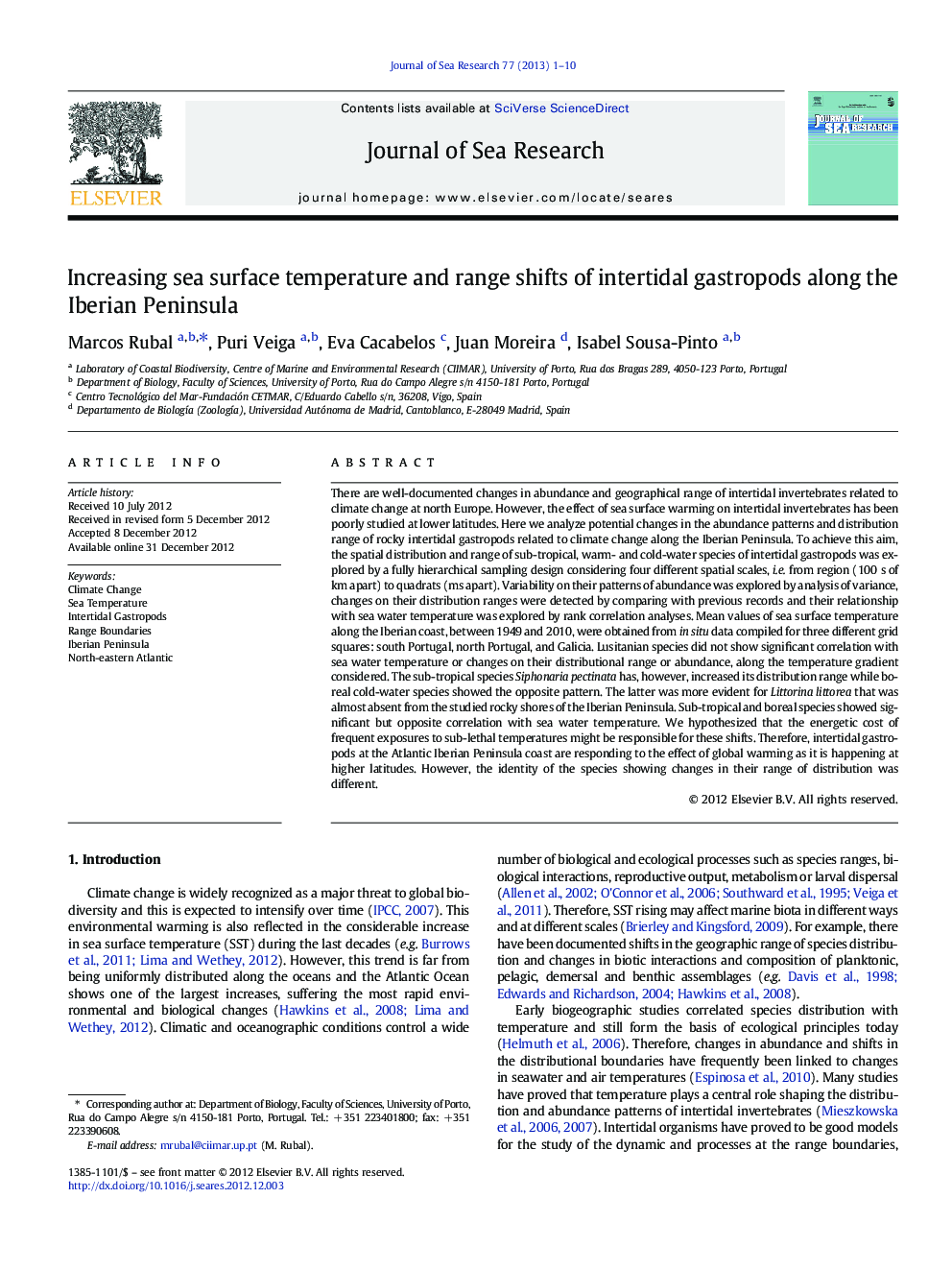| Article ID | Journal | Published Year | Pages | File Type |
|---|---|---|---|---|
| 4549968 | Journal of Sea Research | 2013 | 10 Pages |
There are well-documented changes in abundance and geographical range of intertidal invertebrates related to climate change at north Europe. However, the effect of sea surface warming on intertidal invertebrates has been poorly studied at lower latitudes. Here we analyze potential changes in the abundance patterns and distribution range of rocky intertidal gastropods related to climate change along the Iberian Peninsula. To achieve this aim, the spatial distribution and range of sub-tropical, warm- and cold-water species of intertidal gastropods was explored by a fully hierarchical sampling design considering four different spatial scales, i.e. from region (100 s of km apart) to quadrats (ms apart). Variability on their patterns of abundance was explored by analysis of variance, changes on their distribution ranges were detected by comparing with previous records and their relationship with sea water temperature was explored by rank correlation analyses. Mean values of sea surface temperature along the Iberian coast, between 1949 and 2010, were obtained from in situ data compiled for three different grid squares: south Portugal, north Portugal, and Galicia. Lusitanian species did not show significant correlation with sea water temperature or changes on their distributional range or abundance, along the temperature gradient considered. The sub-tropical species Siphonaria pectinata has, however, increased its distribution range while boreal cold-water species showed the opposite pattern. The latter was more evident for Littorina littorea that was almost absent from the studied rocky shores of the Iberian Peninsula. Sub-tropical and boreal species showed significant but opposite correlation with sea water temperature. We hypothesized that the energetic cost of frequent exposures to sub-lethal temperatures might be responsible for these shifts. Therefore, intertidal gastropods at the Atlantic Iberian Peninsula coast are responding to the effect of global warming as it is happening at higher latitudes. However, the identity of the species showing changes in their range of distribution was different.
► Intertidal gastropods spatial distribution was explored in relation to global warming ► Cold-water species reduced their distributional range ► Siphonaria pectinata increased considerably its distribution range to the north ► Sea surface temperature increase on the Iberian coast could be responsible for shifts
